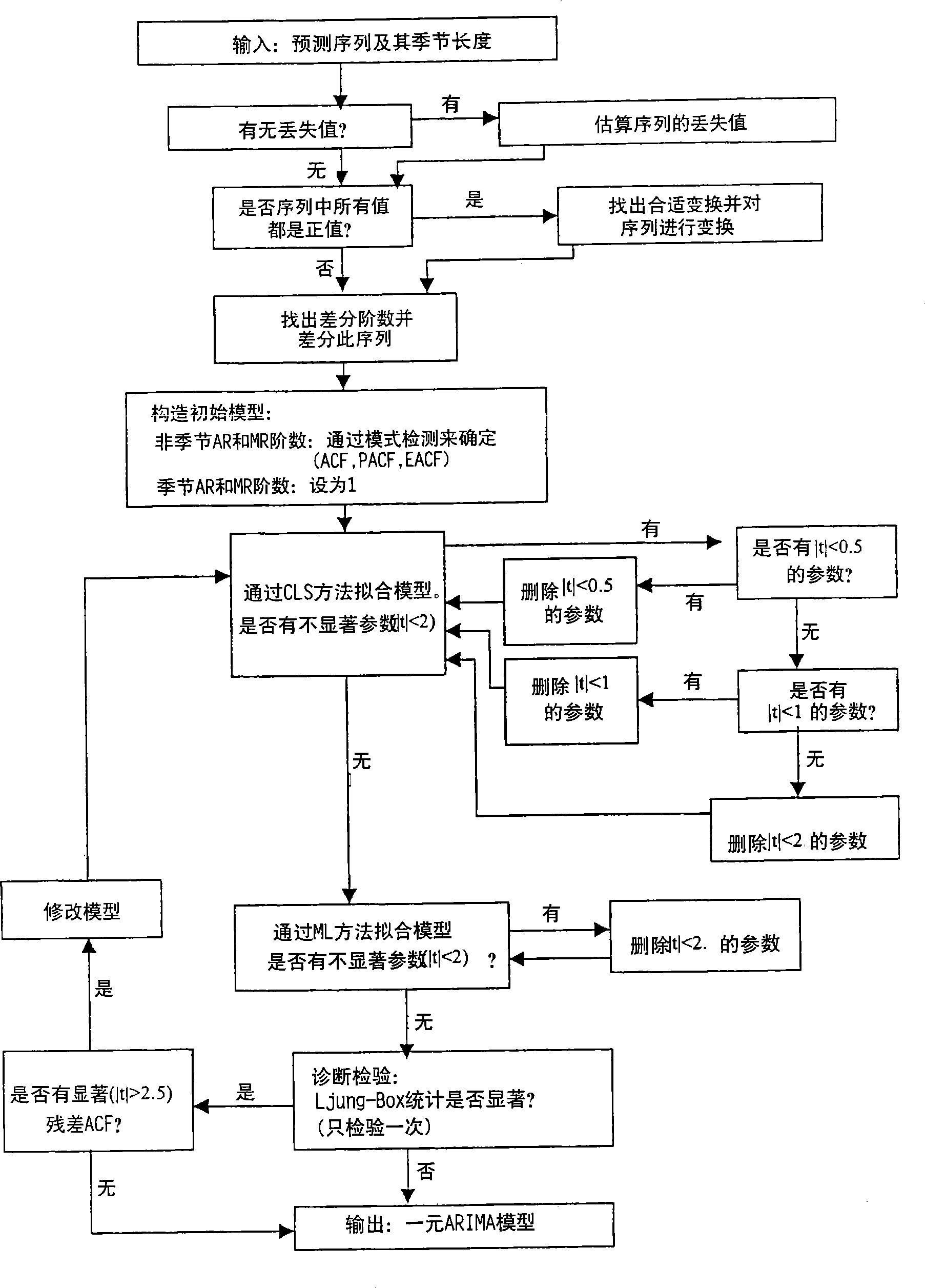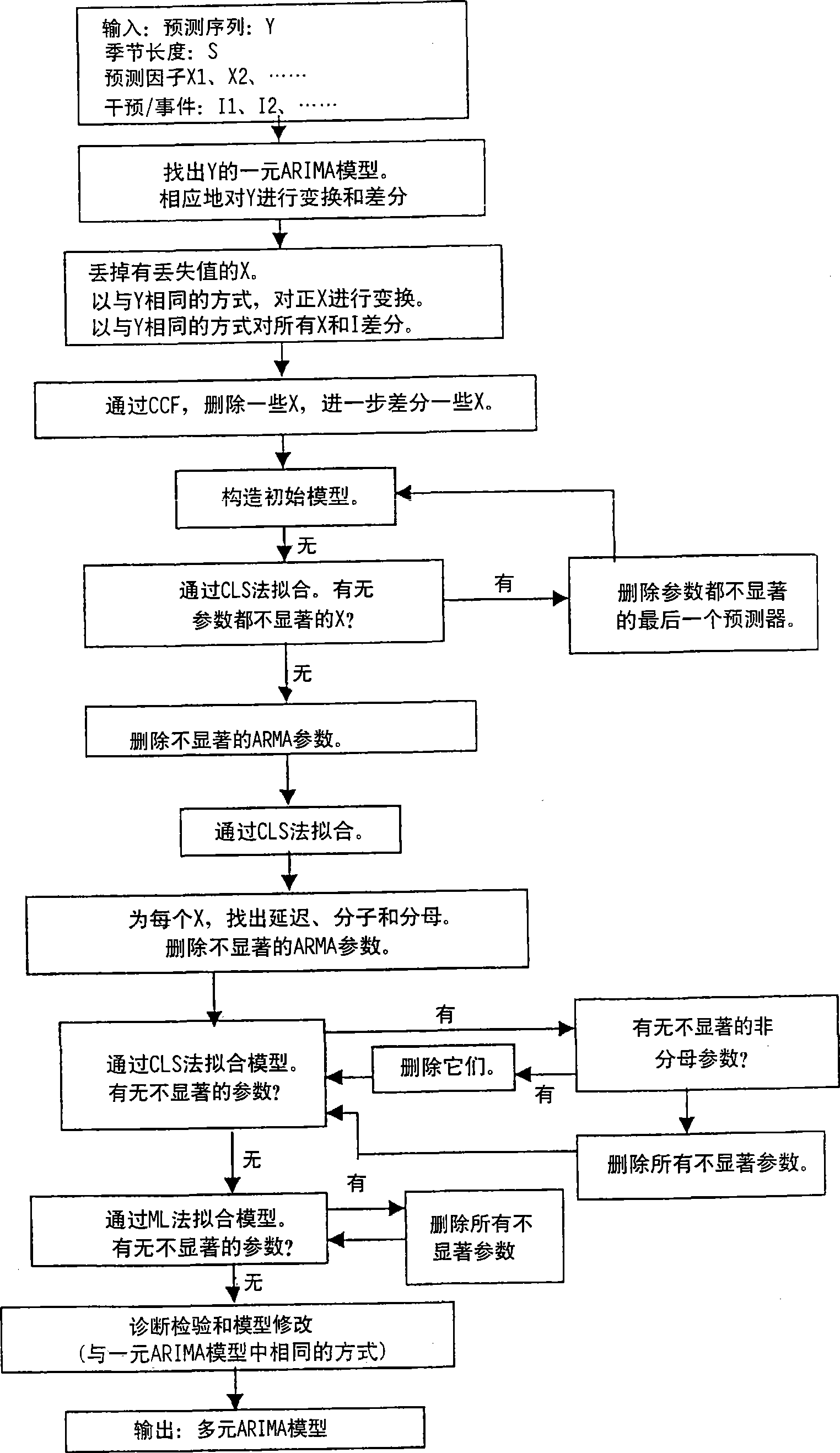System and method for building a time series model
A time series and model technology, applied in instruments, complex mathematical operations, data processing applications, etc., can solve the problem of time-consuming, unable to cover the true value model order, pattern recognition method can not well determine the seasonal AR and MA orders And other issues
- Summary
- Abstract
- Description
- Claims
- Application Information
AI Technical Summary
Problems solved by technology
Method used
Image
Examples
example 1
[0189] Constructing a Univariate ARIMA Model for International Airline Passenger Data
[0190] In this example, the sequence is the monthly total of international airline passengers traveling from January 1949 to December 1960. Such as Figure 4 , where the y-axis represents the number of passengers (in thousands), and the x-axis shows the year and month.
[0191] Box and Jenkins (1976) studied this series and found that a logarithmic transformation was required. They determine a (0,1,1)(0,1,1) model for this log-transformed sequence. Therefore, the model of the log-transformed sequence (0,1,1)(0,1,1) is called the "airline" model. The method of the present invention finds the same model for the monthly total number of international airline passengers as the input time series to be predicted, and "12" as the input seasonal cycle. Figure 5 Predicted values using the model shown along with the input time series are shown. The figure shows future values for a one-year f...
example 2
[0193] Constructing a Multivariate ARIMA Model of Clothing Sales
[0194] Such as Figure 6A and 6B A multivariate ARIMA model constructed to predict men's and women's apparel catalog sales is shown in . The dataset consists of simulated and raw data, and it includes monthly sales of men's and women's clothing by catalog companies from January 1989 to December 1998. There are 5 predictors that could potentially impact sales, including:
[0195] (1) The number of catalogs mailed, referred to as "mails";
[0196] (2) the number of pages in the catalog, referred to as "pages";
[0197] (3) The number of telephone lines used for ordering, referred to as "telephones";
[0198] (4) the amount spent on printing the advertisement, referred to as "printing"; and
[0199] (5) Number of customer service representatives, referred to as "services."
[0200] Other considerations include the strike in June 1995 (the "Strike"), the printing accident in September 1997 (the "Incident") a...
PUM
 Login to View More
Login to View More Abstract
Description
Claims
Application Information
 Login to View More
Login to View More - R&D
- Intellectual Property
- Life Sciences
- Materials
- Tech Scout
- Unparalleled Data Quality
- Higher Quality Content
- 60% Fewer Hallucinations
Browse by: Latest US Patents, China's latest patents, Technical Efficacy Thesaurus, Application Domain, Technology Topic, Popular Technical Reports.
© 2025 PatSnap. All rights reserved.Legal|Privacy policy|Modern Slavery Act Transparency Statement|Sitemap|About US| Contact US: help@patsnap.com



